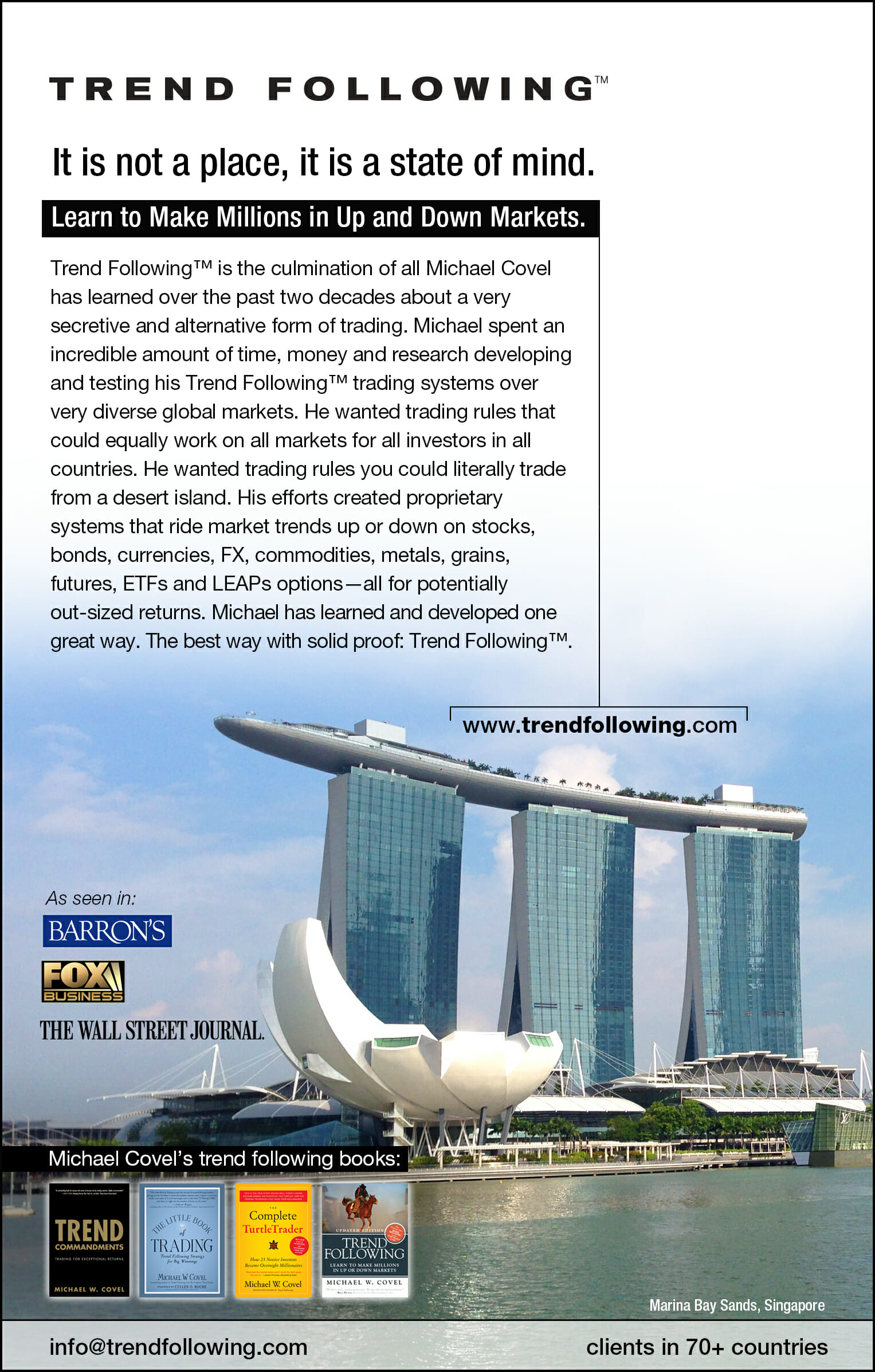![]() Download the Adobe .pdf report.
Download the Adobe .pdf report.
Richard H. Thaler (Professor of Behavioral Science and Economics; University of Chicago) offers great insight into mental accounting. Thaler’s work forms the behavioral finance foundation needed to win in the trading game. Trend followers do not ignore his wisdom.
Excerpt: The Diversification Heuristic
Journal of Behavioral Decision Making
J. Behav. Dec. Making, 12: 183-206 (1999)
Mental Accounting Matters, RICHARD H. THALER
Graduate School of Business, University of Chicago:
The unit of analysis can also influence how much variety consumers elect. This effect was first demonstrated by Simonson (1990). He gave students the opportunity to select among six snacks (candy bars, chips, etc.) in one of two conditions: (a) sequential choice: they picked one of the six snacks at each of three class meetings held a week apart; (b) simultaneous choice: on the first class meeting they selected three snacks to be consumed one snack per week over the three class meetings. Simonson observed that in the simultaneous choice condition subjects displayed much more variety seeking than in the sequential choice condition. For example, in the simultaneous choice condition 64% of the subjects chose three different snacks whereas in the sequential choice condition only 9% of the subjects made this choice. Simonson suggests that this behavior might be explained by variety seeking serving as a choice heuristic. That is, when asked to make several choices at once, people tend to diversify. This strategy is sensible under some circumstances (such as when eating a meal -we typically do not order three courses of the same food), but can be misapplied to other situations, such as sequential choice. This mistake represents a failure of predicted utility to accurately forecast subsequent experienced utility. Many students who liked Snickers best elected that snack each week when they picked one week at a time, but went for variety when they had to choose in advance.
This result has been called the ‘diversification bias’ by Read and Loewenstein (1995). They demonstrate the role of choice bracketing in an ingenious experiment conducted on Halloween night. The ‘subjects’ in the experiment were young trick-or-treaters who approached two adjacent houses. In one condition the children were offered a choice between two candies (Three Musketeers and Milky Way) at each house. In the other condition they were told at the first house they reached to ‘choose whichever two candy bars you like’. Large piles of both candies were displayed to assure that the children would not think it rude to take two of the same. The results showed a strong diversification bias in the simultaneous choice condition: every child selected one of each candy. In contrast, only 48% of the children in the sequential choice condition picked different candies. This result is striking, since in either case the candies are dumped into a bag and consumed later. It is the portfolio in the bag that matters, not the portfolio selected at each house.
The diversification bias is not limited to young people choosing among snacks. Benartzi and I (1998) have found evidence of the same phenomenon by studying how people allocate their retirement funds across various investment vehicles. In particular, we find some evidence for an extreme version of this bias that we call the I/n heuristic. The idea is that when an employee is offered n funds to choose from in her retirement plan, she divides the money evenly among the funds offered. Use of this heuristic, or others only slightly more sophisticated, implies that the asset allocation an investor chooses will depend strongly on the array of funds offered in the retirement plan. Thus, in a plan that offered one stock fund and one bond fund, the average allocation would be 50% stocks, but if another stock fund were added, the allocation to stocks would jump to two thirds. We find evidence supporting just this behavior. In a sample of pension plans we regress the percentage of the plan assets in stocks on the percentage of the funds that are stock funds and find a very strong relationship.
We also find that employees seem to put stock in the company they work for into a separate mental account. For companies that do not offer their own stock as one of the options in the pension plan the employees invest 49% of their money in bonds and 51% in stocks. When the company stock is included in the plan this investment attracts 42% of the funds. If the employees wanted to attain a 50% equity exposure, they would invest about 8% of the rest of their funds in stocks, the rest in bonds. Instead they invest their non-company stock funds evenly: 29% in stocks, 29% in bonds.
TurtleTrader comment: How do you decide? Do you pick targets of opportunity or do you diversify blindly? Ponder Thaler’s paper.
Trend Following Products
Review trend following systems and training:

More info here.
